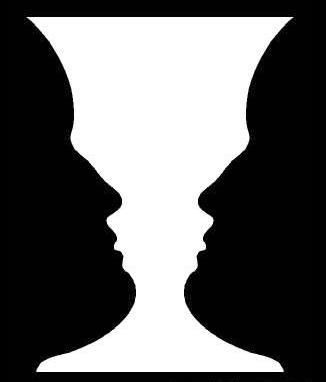Listen to a version of this post on The Cooler, KQED’s weekly pop culture podcast!
Yanny vs. Laurel: Why Can't We Agree? Science Has the Answer

America is divided. Republicans vs. Democrats. Westworld fans vs. people who say, "What’s Westworld?" Cilantro lovers vs. people who lie and allege cilantro tastes like soap.
As if we needed yet another divisive thing to fight about, last week, a weird audio clip surfaced that has inspired a whole lot of disagreement. In case you've been living under a rock, click play to find out where you stand on this important issue:
Much like in 2015, when we had a similar cultural moment with #TheDress, which was either white and gold or blue and black, depending on whom you ask, we have another sensory enigma on our hands (or more accurately, in our ears).
I clearly hear Yanny, but there are Laurel truthers out there too, like my own boyfriend. Needless to say, he and I are debating consciously uncoupling now that we know how diametrically opposed our true selves are.
Just like us, celebrities were not immune from getting caught up in this craze.
Marlee Matlin, the only deaf performer to win an Oscar, tweeted:
Ellen and Katy Perry are solidly in Camp Laurel, and a perplexed Chrissy Teigen also plays for that team, tweeting:
To which Yanni, the legendary Greek musician, responded:
This is the best thing to happen to Yanni in years! Or maybe it’s not, considering he filmed this Yanny vs. Laurel video from inside a private plane:
Mindy Kaling also responded to Chrissy Teigen by tweeting:
So what’s the science on all of this? After a bit of digging, I discovered a few interesting things:
#TheDress and Yanny vs. Laurel are both instances of what is called an ambiguity illusion. In a nutshell, it’s when something "presents the viewer with a mental choice of two interpretations, each of which is valid."
For instance, this optical illusion appears to either be a young lady or an old woman:

Or this image that people either see as a chalice or the profiles of two people:

Or this image, which is either a saxophone player or a Taylor Swift lookalike:

What you see usually comes down to which piece of the image you initially focused on. Scientists say that once your brain has processed an image or a sound as having a certain meaning, it’s hard to experience it another way. The same goes for the Yanny / Laurel clip.
An audio engineer by the name of Dylan Bennett suspects he knows exactly how this ambiguous illusion works: people who hear Yanny are more receptive to higher frequencies, while Laurel people are more in tune with lower frequencies. Bennett put his theory to the test by taking out the high frequencies to leave only Laurel, and vice versa. Listen up to hear what the other side is experiencing!
Another interesting sound experiment comes courtesy of Nina Kraus, an auditory biology researcher at Northwestern University. She explained this Yanny / Laurel phenomenon to Popular Science by saying, “The way you hear sound is influenced by your life in sound. What you expect to hear is, to a large extent, what your brain will hear—and what your brain hears is all that matters.” She offered two clips as evidence.
First, give a listen to the noisy version. Then, listen to the clean version of the same file. Then, return to the original to listen for any changes in your perception.
https://soundcloud.com/user-468162488/noisy-version
https://soundcloud.com/user-468162488/clean-version
Because of the new expectation to hear about the juice of lemons, our brains are able to make sense of the hidden distorted language! Being alive and having senses is so fun and trippy!
Okay, this next bit of science is going to excite half of the population and really bum out the other. A human’s ability to hear higher frequencies fades with age, which is why children hear Yanny. So, guess what, my fellow Yanny-hearers: we are very youthful! Sorry, Laurel fans. Being on the wrong side of history was bad enough, and now you’re super old on top of that? Bummer!
Just kidding; I still love y’all. Here’s a piece of information that might make Team Laurel feel vindicated. The origin story of this sound clip is that some 18-year old Reddit user from Georgia recorded the vocabulary.com pronunciation of "laurel" through his speakers, which heavily distorted the sound. So technically it did start as Laurel! Because of the distortion, our brains try to make sense of the audio by picking out the frequency range we’re used to. Also, your speakers or headphones might prefer -- and thus deliver -- a certain frequency.
So, in a nutshell, we are all going to disagree about this, and #TheDress, and politics, and cilantro until the end of time. But hopefully we can all agree that Yanni, the person, deserves more of our attention.
This piece was inspired by an episode of The Cooler, KQED’s weekly pop culture podcast. Give it a listen!

